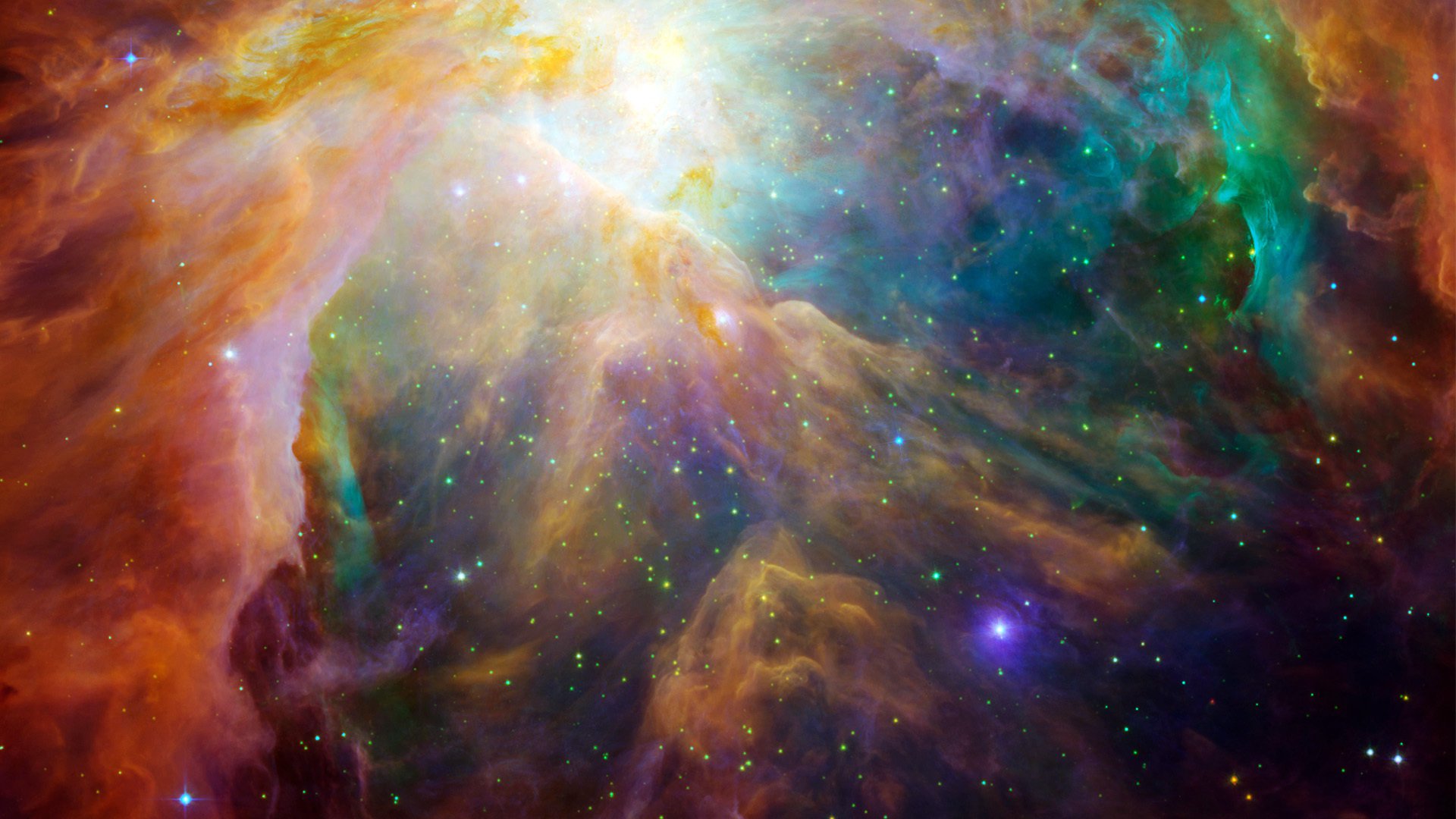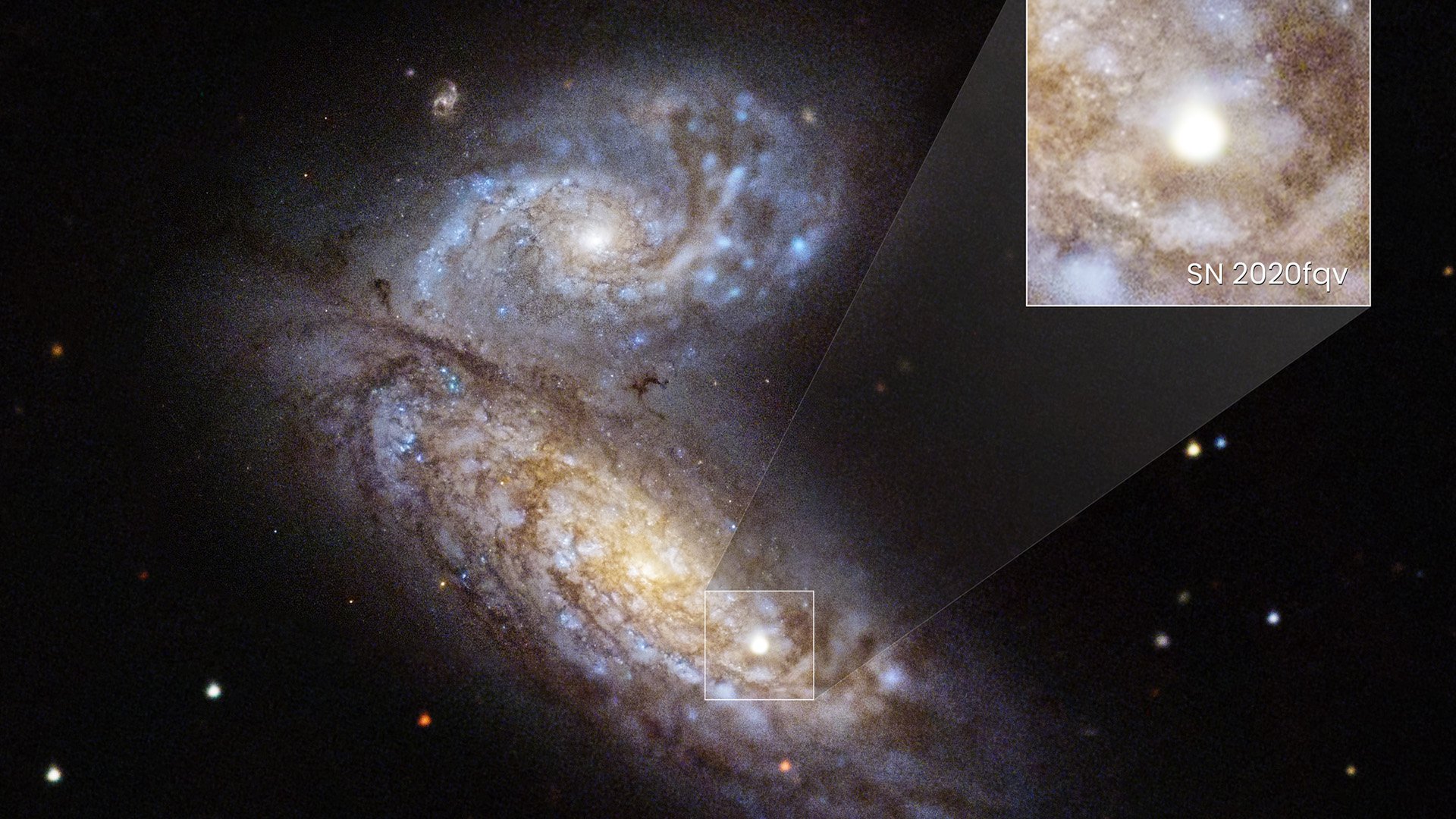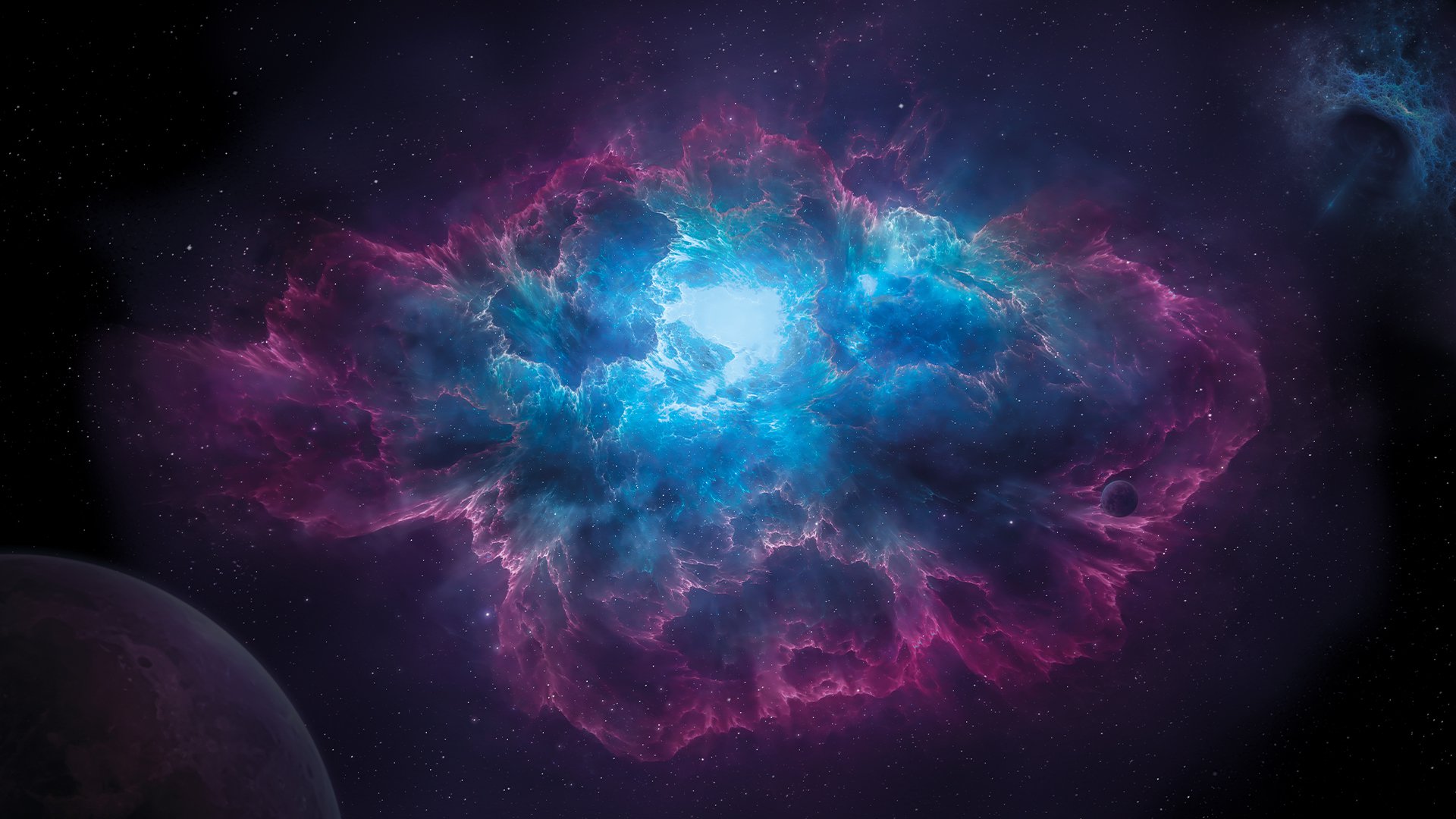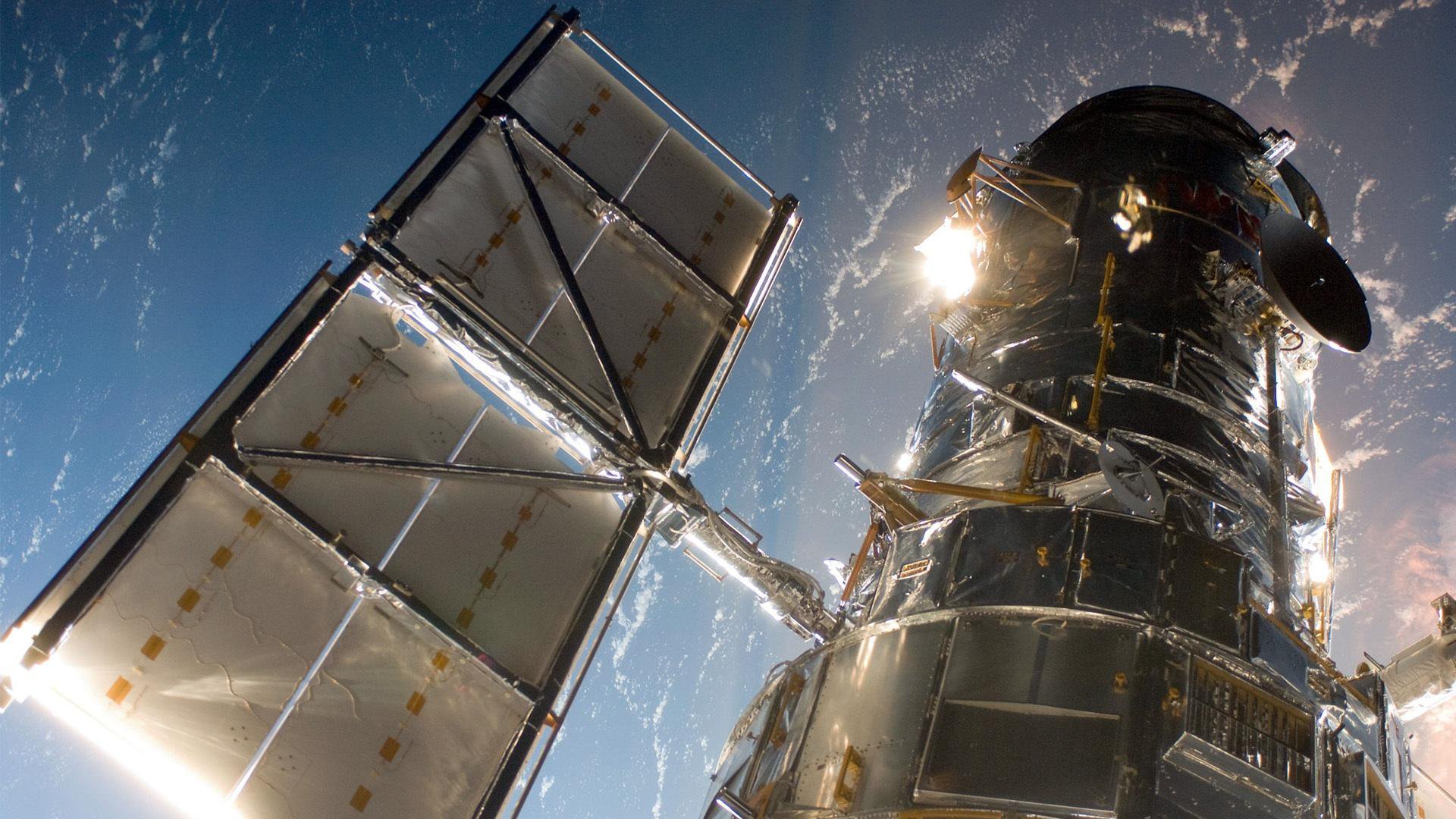10 spectacular Hubble Space Telescope images
With the upcoming launch of the James Webb Space Telescope, the Hubble era is gradually drawing to a close. Here are some highlights from the countless wonders Hubble has shown us during its 31 years in space.

A 2006 composite image from NASA's Hubble Space Telescope and Spitzer Telescope shows the chaos of baby stars in the Orion nebula some 1,500 light-years away. Image Credit: NASA/JPL-Caltech/STScI
For 10 days in 1995, the Hubble Space Telescope turned its gaze toward a small and seemingly empty patch of space. The result was the “Hubble Deep Field,” a very-much-not-empty image packed with the 3,000 faintest galaxies ever detected.
Hubble has been at the center of such remarkable discoveries for more than 30 years, detecting the atmospheric makeup of exoplanets, using light wavelengths to help us understand how stars form, and giving humanity its first ringside seat at a supernova.
Building on Hubble’s science, NASA is now preparing to launch its successor: the James Webb Space Telescope (JWST). The telescope (whose name has sparked controversy) will be able to look even further into the past by going beyond visible light and observing primarily in the infrared part of the spectrum. As the universe expands, light emitted by the first luminous objects has been stretched out, or “redshifted” into longer wavelengths. The JWST is designed to pick up these wavelengths with sensitivity and resolution so powerful it will be able to observe light arriving from only a few hundred million years after the Big Bang.
Still, for decades our best views of the universe came from Hubble. Here’s a look back at some of the spectacular images that helped us better understand our universe.

The image was taken by Hubble's Wide Field Camera 3 to commemorate Hubble's 30 years in space in 2020. Image Credit: NASA, ESA, and STScI
"Cosmic Reef"
This giant red nebula and its smaller blue neighbor are part of a vast star-forming region in the Large Magellanic Cloud, a satellite galaxy of the Milky Way, some 163,000 light-years away. The image is nicknamed "Cosmic Reef," NASA says, because the red nebula resembles a coral reef floating in a sea of stars. The sparkling central region is a group of hefty stars, each 10 to 20 times more massive than our sun.

A 2012 composite of separate exposures. Image Credit: NASA, ESA, the Hubble Heritage Team (STScI/AURA)-ESA/Hubble Collaboration, and W. Keel (University of Alabama)
Overlapping Galaxies
A rare view of a pair of overlapping galaxies, called NGC 3314. The two galaxies look as if they are colliding, but they're actually separated by tens of millions of light-years, or about ten times the distance between our Milky Way and the neighboring Andromeda galaxy, NASA says. Despite their appearance here, the motion of the two galaxies indicates that they are both relatively undisturbed and are moving in markedly different directions—not on any collision course.

A 2016 image from an imaging and spectroscopic study of the region. Image Credit: NASA, ESA, and P. Crowther (University of Sheffield)
Star Cluster R136
In the central region of the Tarantula Nebula, some 170,000 light-years from Earth, lies a dense cluster of young stars (seen at the lower right). Among the hundreds of young, blue stars are the most massive stars detected in the universe so far, NASA says. In the most dense, central region of this cluster astronomers have found nine stars with masses greater than 100 times the mass of our sun.

A 2015 image was created with observations taken by Hubble's Wide Field Camera 3 instrument using five different filters to enhance the contrast of the Veil Nebula’s gases. Image Credit: NASA and STScI
Veil Nebula
A small section of the Veil Nebula, the debris of a supernova remnant formed roughly 8,000 years ago by the death of a star 20 times the mass of our sun. As massive stars tend to do, it “lived fast and died young,” ending its life in a cataclysmic release of energy. The shockwaves and debris from that supernova sculpted the Veil Nebula’s delicate wisps of ionized gas. In this image, red corresponds to hydrogen, green to sulfur, and blue to oxygen.

A 2002 image. Image Credit: NASA, ESA and H.E. Bond (STScI)
Light Echo from a Red Supergiant Star
This image of the red supergiant star V838 Monocerotis reveals dramatic changes in the illumination of its surrounding dust clouds. The effect, called a light echo, unveiled never-before-seen dust patterns when the star suddenly brightened in January 2002. It temporarily became one of the brightest stars in the Milky Way—600,000 times brighter than our sun—before fading in April 2002. In contrast to a normal nova explosion, V838 Monocerotis did not expel its outer layers, NASA reported. Instead, it ballooned in size, and its surface temperature dropped to temperatures not much hotter than a light bulb. Scientists aren’t sure why it erupted this way but say the outburst may represent a rarely seen transitional stage in a star's evolution.

A 2015 composite of separate exposures. Image Credit: NASA and ESA
Herbig-Haro Object 24
Newly formed stars sometimes shoot out thin, hot jets of ionized gas, creating a lightsaber-like effect known as a Herbig-Haro object. The young star obscured by dust at the center of this image lies in our own Milky Way, some 1,350 light-years away. Hubble observed this HH object in infrared; according to NASA, these young stellar jets will be ideal targets for the JWST, which will have even greater infrared wavelength vision to see deeper into the dust surrounding newly forming stars.

A 2009 composite image captured by Hubble's Wide Field Camera 3 in ultraviolet and visible light. Filters isolated emissions from oxygen, helium, hydrogen, nitrogen, and sulfur from the planetary nebula. Image Credit: NASA, ESA, and the Hubble SM4 ERO Team
Butterfly Nebula
As smaller stars die, they eject their outer layers of gas into space over the course of about 10,000 years, leaving behind a hot core known as a white dwarf. Radiation from the white dwarf at the center of this image illuminates the departing gas, creating a striking formation called a planetary nebula. According to NASA, the name comes from the early days of astronomy, when observers thought the dim forms they observed might be related to planets. With an estimated surface temperature of more than 400,000 degrees Fahrenheit, the central star of this planetary nebula is one of the hottest stars on record.

A 2020 composite of separate exposures. Image Credit: NASA, ESA, STScI, A. Simon (Goddard Space Flight Center), and M.H. Wong (University of California, Berkeley) and the OPAL team
Jupiter and Europa
This fairly recent image of Jupiter captured not only the gas giant’s famed Great Red Spot, but a bright white, stretched-out storm in the mid-northern latitudes that’s traveling around the planet at 350 miles per hour. And below the Great Red Spot, Oval BA—nicknamed Red Spot Jr.—continues to fluctuate, now shifting from its typical whitish coloration to redder tones. The icy moon Europa, which is thought to hold potential ingredients for life, is visible to the left of Jupiter.

A 2010 composite of separate exposures. Image Credit: NASA, ESA, and M. Livio and the Hubble 20th Anniversary Team (STScI)
"Mystic Mountain"
In the prolific stellar nursery known as the Carina Nebula, chaos unfolds at the top of a three-light-year-tall pillar of gas and dust. Scorching radiation and streams of charged particles from super-hot newborn stars in the nebula shape and compress the pillar, causing new stars to form within it. At the same time, the pillar is torn apart from within, NASA reports, as infant stars buried inside it fire off jets of gas that can be seen streaming from its peaks.

This 2006 image uses visible and near-infrared observations from Hubble’s Wide Field Camera 3, along with previous observations from Hubble’s Advanced Camera for Surveys. Image Credit: NASA, ESA, and the Hubble Heritage Team (STScI/AURA)-ESA/Hubble Collaboration
Antennae Galaxies
Hubble has been documenting the merging of two spiral galaxies dubbed the “Antennae galaxies” for years.The pair began to interact a few hundred million years ago, NASA reports, and during the course of the collision, billions of stars will be formed. This clash is so violent that stars have been ripped from their host galaxies to form a streaming arc between the two, the inspiration for their name. And the rate of star formation is so high that the Antennae galaxies are said to be in a state of starburst, a period in which all of the gas within the galaxies is being used to form stars. This stage cannot last forever and neither can the separate galaxies; eventually, they will meld together to become one large elliptical galaxy.




